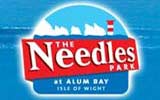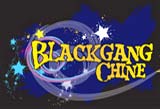Shanklin
Shanklin is a delightful mix of old and new, but it is a wonderful example of the typical English seaside town of years gone by. Found at the southernmost tip of Sandown Bay with an esplanade joining the two, the beautiful flat, sandy beach stretches between Culver Cliff north of Sandown to Luccombe Cliffs south of Shanklin. It is one of the best beaches on the island.
As a main tourist destination of the Isle of Wight, Shanklin provides a perfect blend of entertainment, scenery, accommodation and restaurants, to cater for all tastes. The busy seaside esplanade comes alive with the sound of children having fun. Shops, cafés and amusements sit facing the beach, alongside hotels, bars and restaurants. Shanklin Sailing Club is situated at the north end of the promenade. If the thought of walking up the steep hill, or up the zig-zag steps 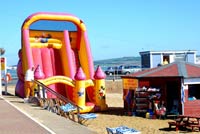 seems too strenuous, Shanklin’s seafront lift will take you to the top of the cliffs. From the top, you can take a walk along Keats Green and sit for a while, taking in the stunning views across the bay to Sandown and out to sea. Amazing.
seems too strenuous, Shanklin’s seafront lift will take you to the top of the cliffs. From the top, you can take a walk along Keats Green and sit for a while, taking in the stunning views across the bay to Sandown and out to sea. Amazing.
Shanklin provides the best of both worlds in that it has the main shopping area of Regent St and High St, and then the quaint Old Village with its pretty thatched tearooms gift shops, inns and Olde worlde charm. There’s plenty of individual shops and good pubs and restaurants often specialising in locally-caught fresh crab and lobster. Travelling to and from Shanklin is easy with regular buses and the train which connects to the catamaran in Ryde, passing Lake, Sandown and Brading on its way. From the Old Village, it is quite a walk to the station, so you might want to take a short bus or taxi ride, or if you’re on the beach at the northern end of Shanklin and you’re feeling energetic, you can walk up the winding road from the beach and reach the station by carrying on straight for a while.
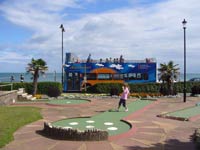 Shanklin is a delight with its Victorian tea gardens and Parks and its beautiful scenery. It boasts a Victorian theatre which plays host to a wide variety of music, dance and comedy throughout the year. Shanklin old village is just what you would expect from its name, a picturesque quintessential English village frozen in time whose street is pictured on many of the Isle of Wight's postcards. Everywhere on the Isle of Wight, you’ll be reminded of its history and how poets, authors and artists were amazed by its beauty, and Shanklin is no exception. In July and August 1819 the poet John Keats lodged at Eglantine Cottage in the resort's High Street and in July 1868, during his last trip to Europe, the American poet Henry Wadsworth Longfellow stayed at the Crab Inn.
Shanklin is a delight with its Victorian tea gardens and Parks and its beautiful scenery. It boasts a Victorian theatre which plays host to a wide variety of music, dance and comedy throughout the year. Shanklin old village is just what you would expect from its name, a picturesque quintessential English village frozen in time whose street is pictured on many of the Isle of Wight's postcards. Everywhere on the Isle of Wight, you’ll be reminded of its history and how poets, authors and artists were amazed by its beauty, and Shanklin is no exception. In July and August 1819 the poet John Keats lodged at Eglantine Cottage in the resort's High Street and in July 1868, during his last trip to Europe, the American poet Henry Wadsworth Longfellow stayed at the Crab Inn.
Isle of Wight accomodation in Shanklin includes cottages, hotels, bed & breakfast establishments and caravan parks such as Landguard Holiday Park and Lower Hyde, which are both within easy reach of all the amenities that Shanklin has to offer.
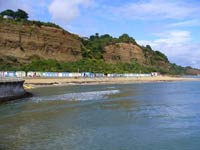 Many pubs offer live music in the evenings, one of which is The Fisherman’s Cottage, a delightful thatched pub situated at the bottom of Shanklin Chine right at the southern end of the beach, with the beautiful cliffs as a backdrop.
Many pubs offer live music in the evenings, one of which is The Fisherman’s Cottage, a delightful thatched pub situated at the bottom of Shanklin Chine right at the southern end of the beach, with the beautiful cliffs as a backdrop.
Shanklin lends its name from the old English 'Scenc Hlinc' which means “the cup in the rising ground”. The cup is the chine, the chine being another old English word meaning chink or fissure. The Chine which was described by Victorian visitors as “savagely grand” and “terrifically sublime” attracted many tourists which helped to transform Shanklin from a tiny fishing village to the popular seaside resort it is today. Shanklin Chine is a delight to behold. It leads down from the old village to the beach and is stunning with cascading waterfalls and glorious flowers, which at night is illuminated in a fairytale fashion. See wildlife and unusual plants and stop at the Heritage Centre while you’re there to gain an insight into the island’s past.
Fascinating Fact
Shanklin Chine was used as the site for the beginning of PLUTO (the pipeline under the ocean) which was built to provide fuel for the Normandy landings on D-Day during the Second World War. Decoy empty fuel tanks were erected along the Esplanade to attract enemy bombers. These proved effective, but the precious fuel was safely pumped from the foot of Shanklin Chine across the Channel to provide the life-blood of the vehicles involved in the world’s biggest marine invasion ever. Find out more about this in the Heritage Centre in the Chine.








